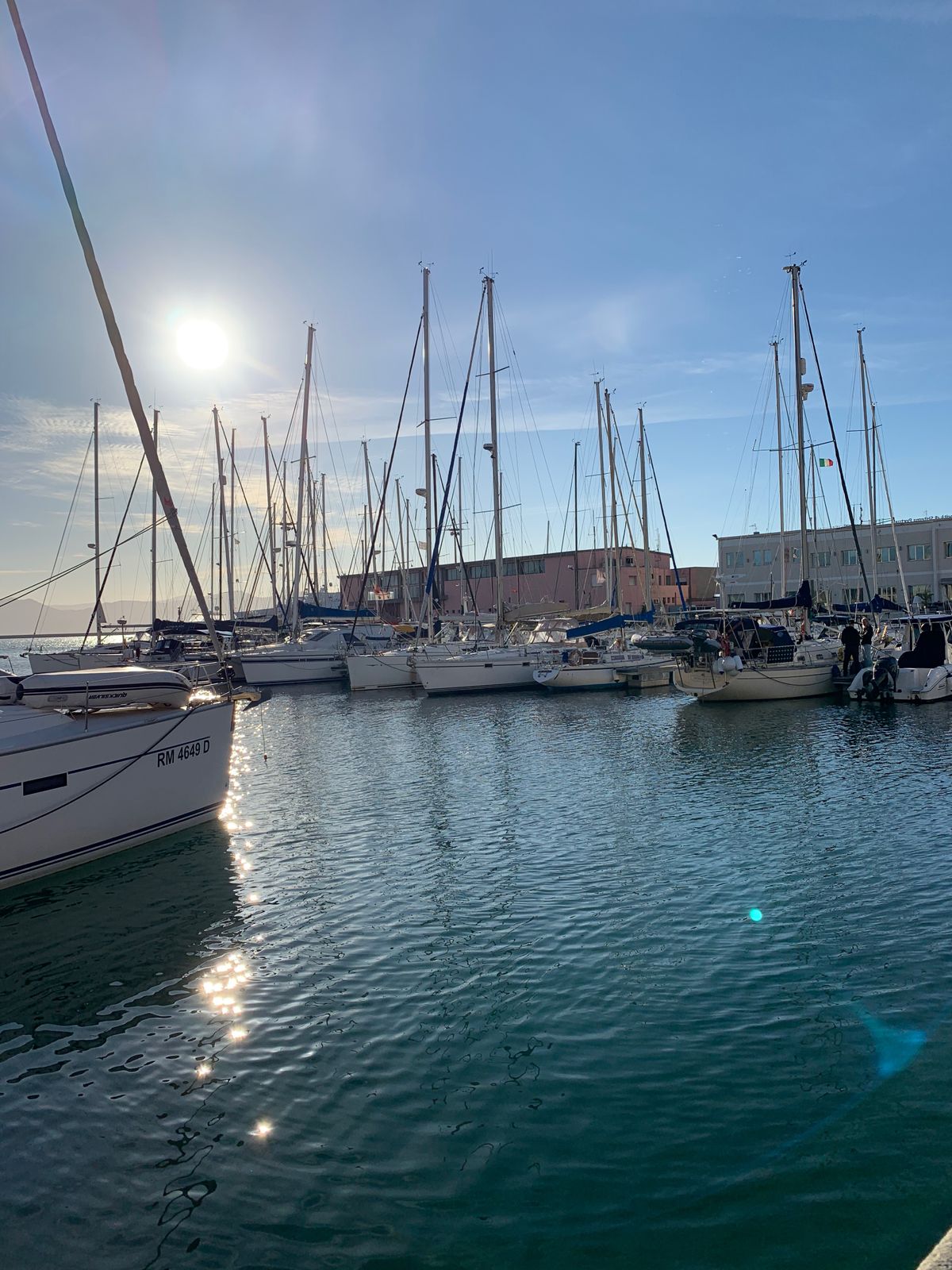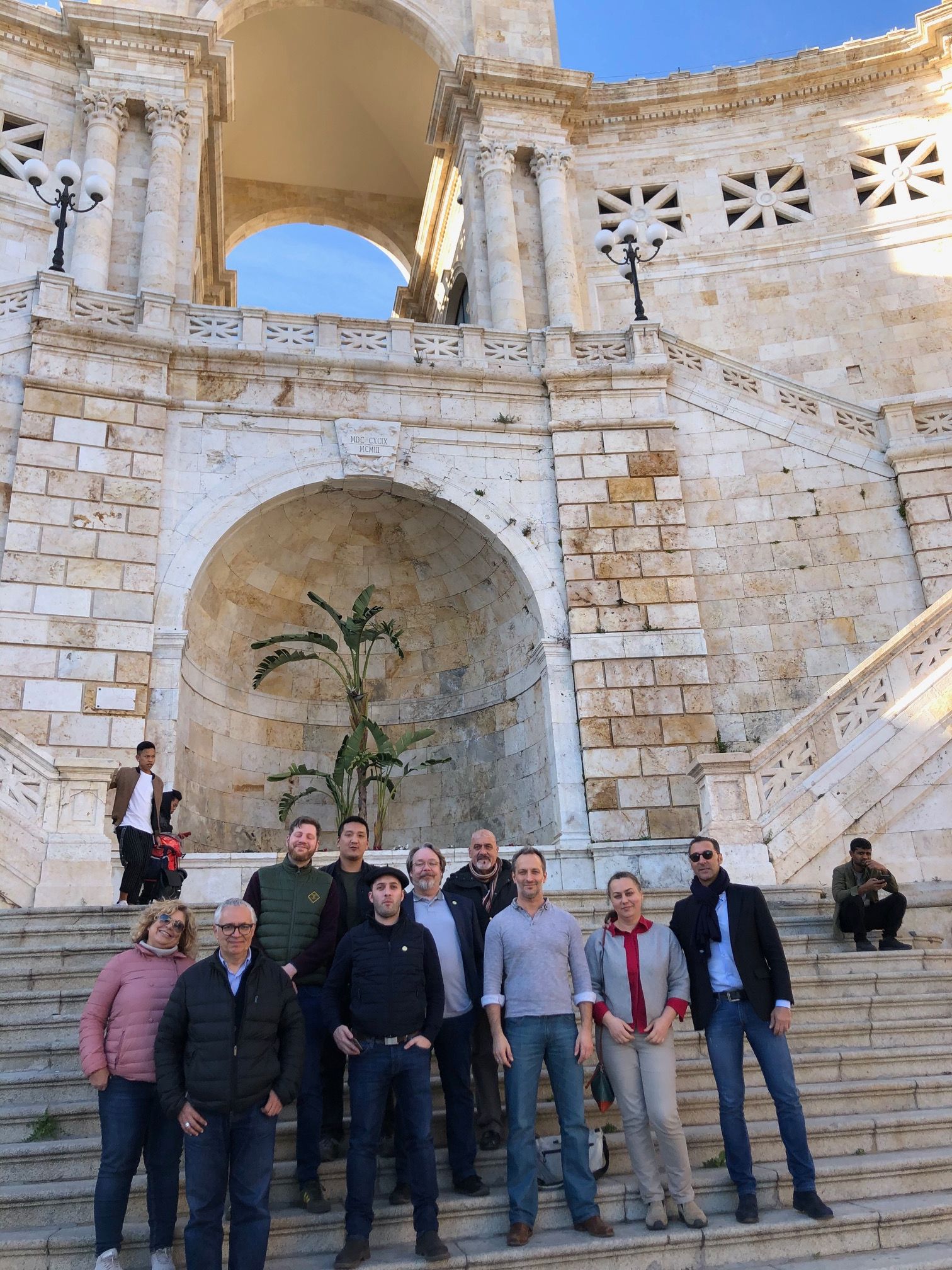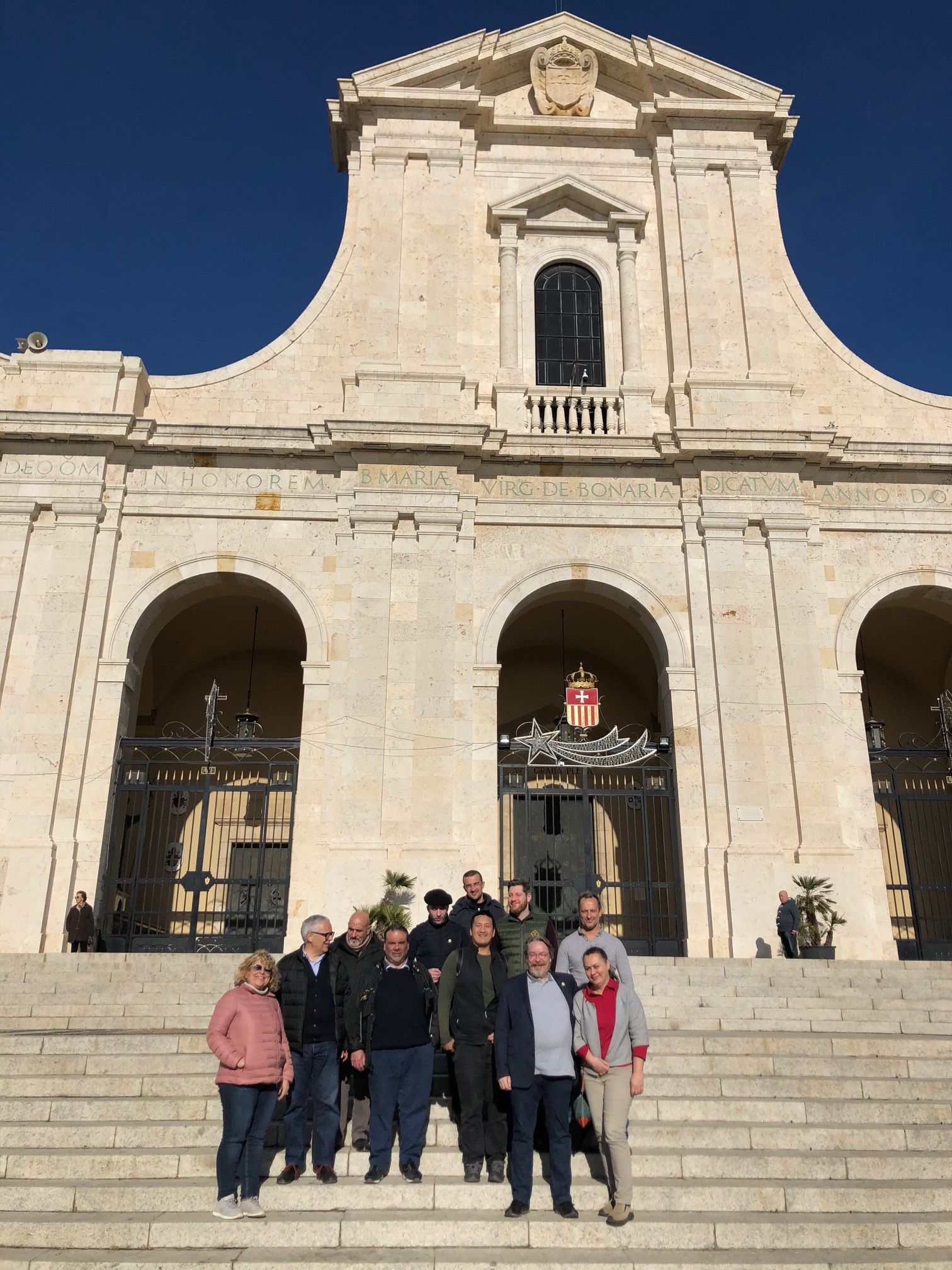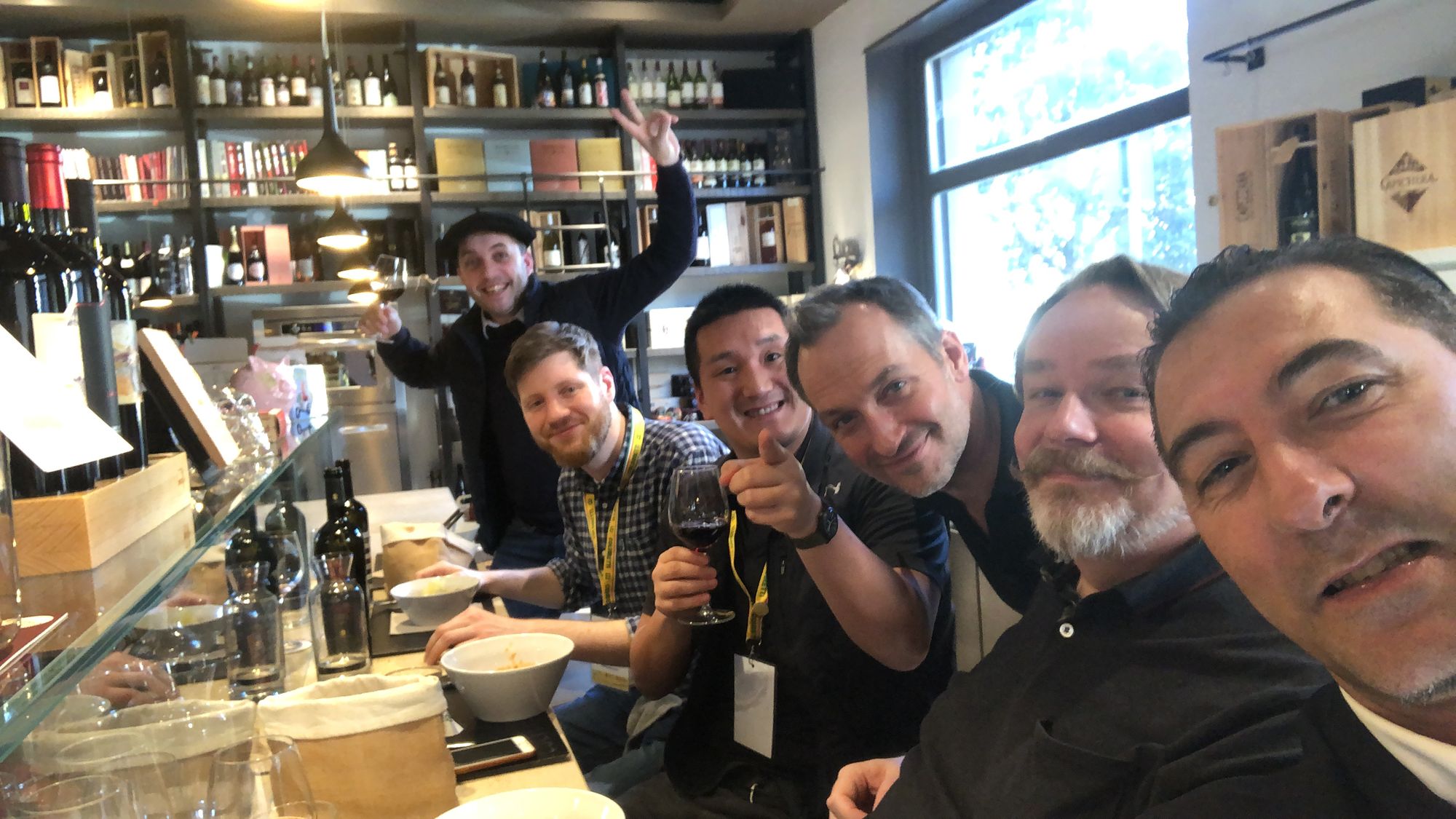Press tour - Cagliari, Sardinia

In February 2020, I headed to the Sardinian capital of Cagliari to continue my work on one of the Mediterranean's key winemaking islands. Hosted by Bentuestu, I was able to combine cultural immersion in Sardinia's largest city with my judging responsibleness at the 1st Concorso Enologico Internazionale - Vermentino.
The first day was dedicated to understanding the traditions of Cagliari, known as the city of the sun, and in reference to its reputation for being heavily fortified, it goes by the title "Casteddu" in the local Sardo dialect - which translates literally as 'Castle'. With 150,000 inhabitants residing in the city centre and a further 280,000 living across its 16 suburban neighbourhoods, Cagliari is the heart and soul of Sardinia.
An archaic city with a long history, Cagliari has lived through the domination of many different civilizations. Its modern architecture emerges from the continuous layers of human settlement, charting the course from its 5000 year old neolithic heritage to present day.
The prehistoric Domus de Janas, tiny stone houses cut into the rock, evoke the Sardinian legend of the House of Fairies. These pre-nuragic chamber tombs are found all over Sardinia, from Cagliari right up to the northern town of Algerho. Of course, remnants of foreign influence guide us through the city's history, but several sites stand out - notably the 2nd century Roman amphitheatre, undoubtedly Cagliari's most significant Roman monument. Sadly, much of it has been plundered for building materials, but is still offers a solid reminder of the city's antiquity.
More recently, the Torre dell'Elefante, one of only two Pisan towers still standing symbolises Aragonese domination over the city. Built in 1307 its structure is typical of the heavily fortified style that characterised the approach of the Spanish rulers. Named after the sculpted elephant, it reaches 42m high and was infamous for its display of severed heads, a scene designed to install fear amongst citizens living under Aragonese rule. It is said that the severed head of the Marchese di Cea was left on show for 17 years.

Cagliari's strategic importance was demonstrated through its role as capital of the Kingdom of Sardinia between 1324 and 1848, only losing its prestige when Italy was unified in 1861. Since then the city has prospered as a regional cultural, educational, political and artistic hub. It is known for its varied architecture, Art Nouveau and numerous monuments. Economically it holds its own too and now boasts around 4 million passengers a year through its international airport. It also hosts one of the largest ports in the Mediterranean, to the extent where it has cultivated its status as one of the leading destinations for cruises heading all over the world. As a safe port, in a moment of international tension, its geographic positioning is particularly attractive.
The Byzantine Basilica of San Saturnino perhaps symbolises the endless change that has swept the city, with its origins dating back to the year 304. Since then it has been altered several times, each change symbolising the culture and ideas of the those in charge. After a great deal of damage inflicted during the Allied bombing raids it was finally restored and reconsecrated in 2004.

From a culinary perspective Sardinia's capital is a treasure of local delicacies. A rather fabulous lunch was found at Cucina.eat, in piazza Gallilei, (photo 3). After dark a tasting masterclass at the Gran Galà del Vermentino provided a comprehensive opportunity to taste through and discuss a range of the island's Vermentino wines. This vibrant event was held in the beautiful "Sa Manifattura", an historical building recently renovated, where a few hundred guests explored their passion for the Vermentino grape.
Piazza Yenne is the focal point of the Marina district. Adorned with a statue of King Carlo Felice, the square bustled with activity and offered the perfect backdrop for our group of journalists and eno bloggers to discuss how historic and modern Cagliari delivers food and wine culture to both locals and tourists. We took in the civic markets, tasting our way around locally sourced ingredients and artisan products before strolling the historic streets, happening upon Palazzo Viceregio and Porta Cristina. Back in the Marina we devoured an evening meal, a typical bowl of cassola and plate of fregula with clams.

One of the city's recognised eno-gastronomic experts and master sommelier with the International Academy Epulae, Dr. Angelo Concas joined us to talk us through a number of Sardinia's top wines. Vermentino dominated, but there was also fine examples from the Canonnao and Bovale Sardo grapes. It was becoming increasingly clear that Cagliari is the gateway to Sardinia's rich food and drink scene and such links between the city and the wider territory offer endless opportunities to develop the wine tourism proposition, arguably one of the key drivers in international appeal for the region.